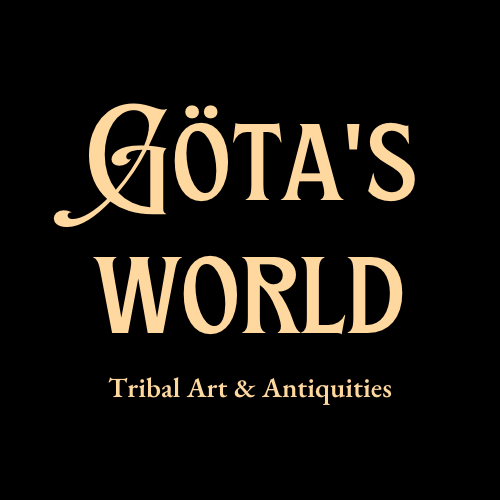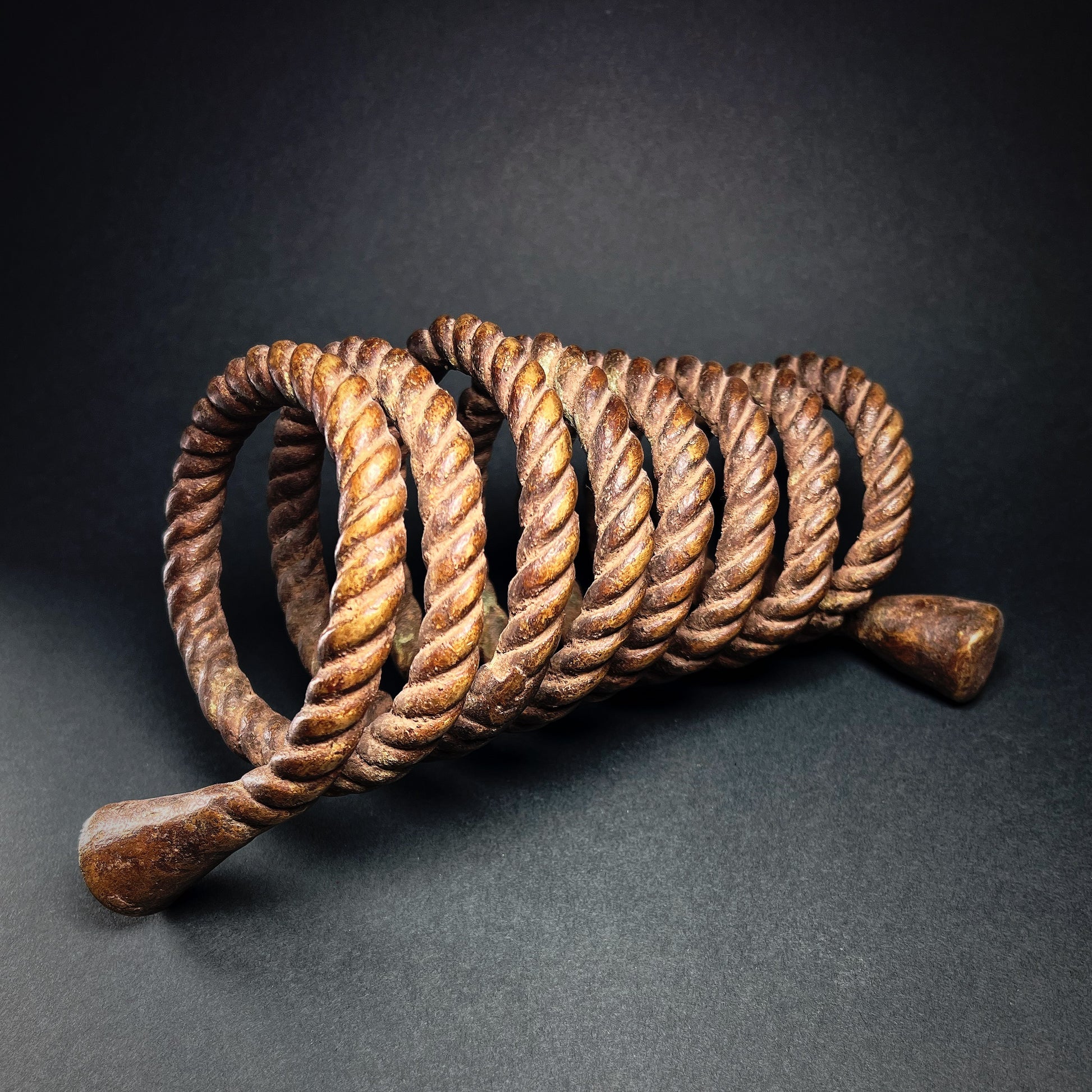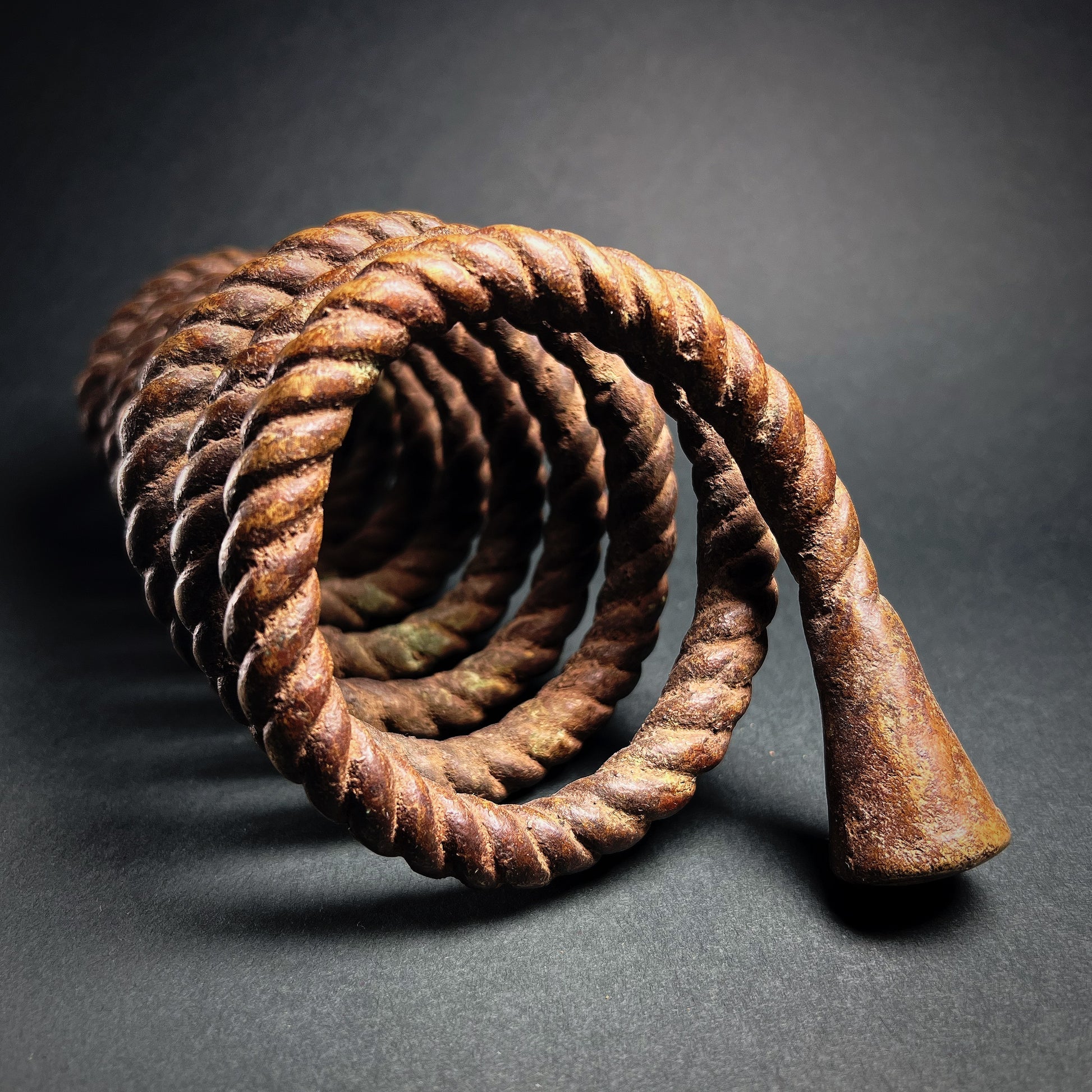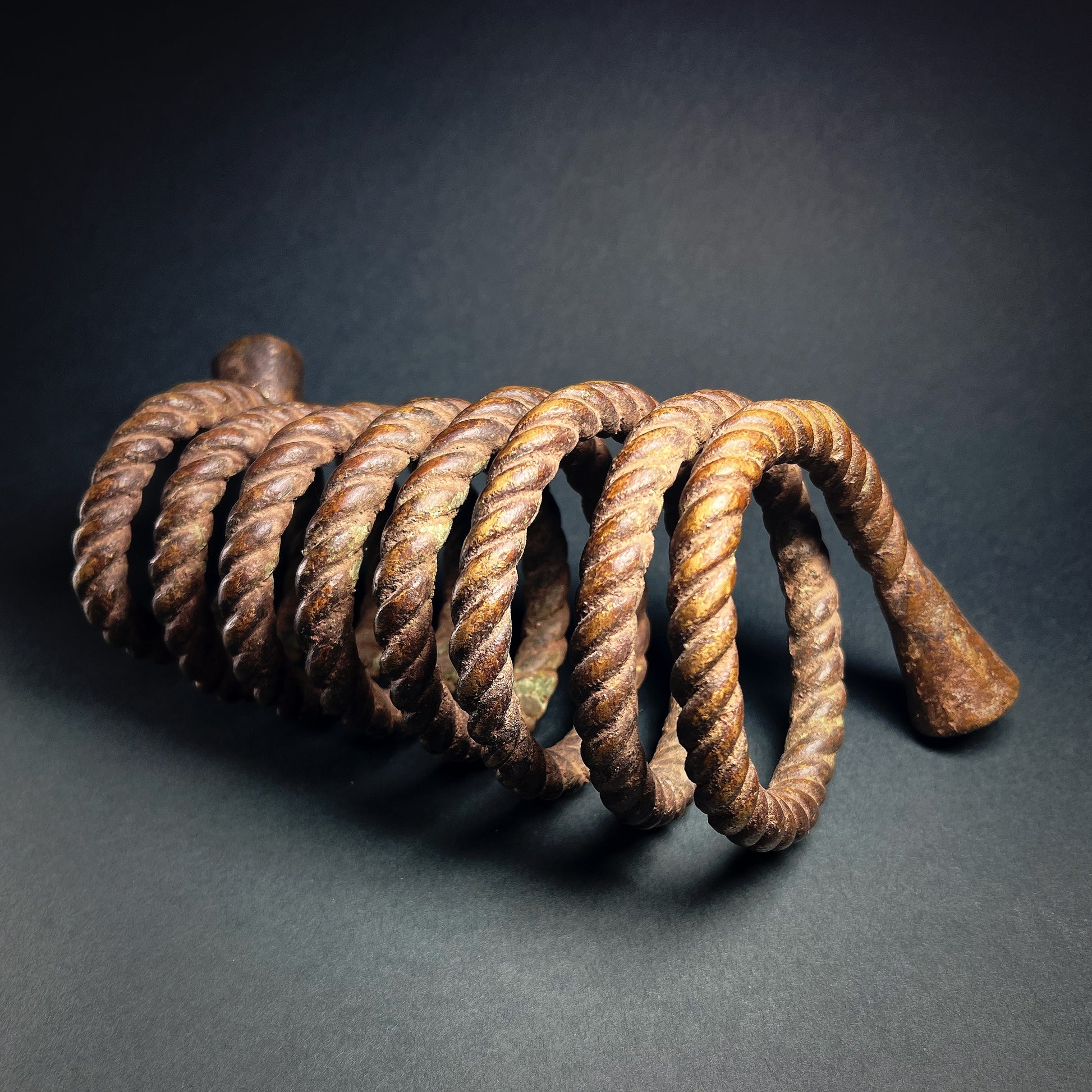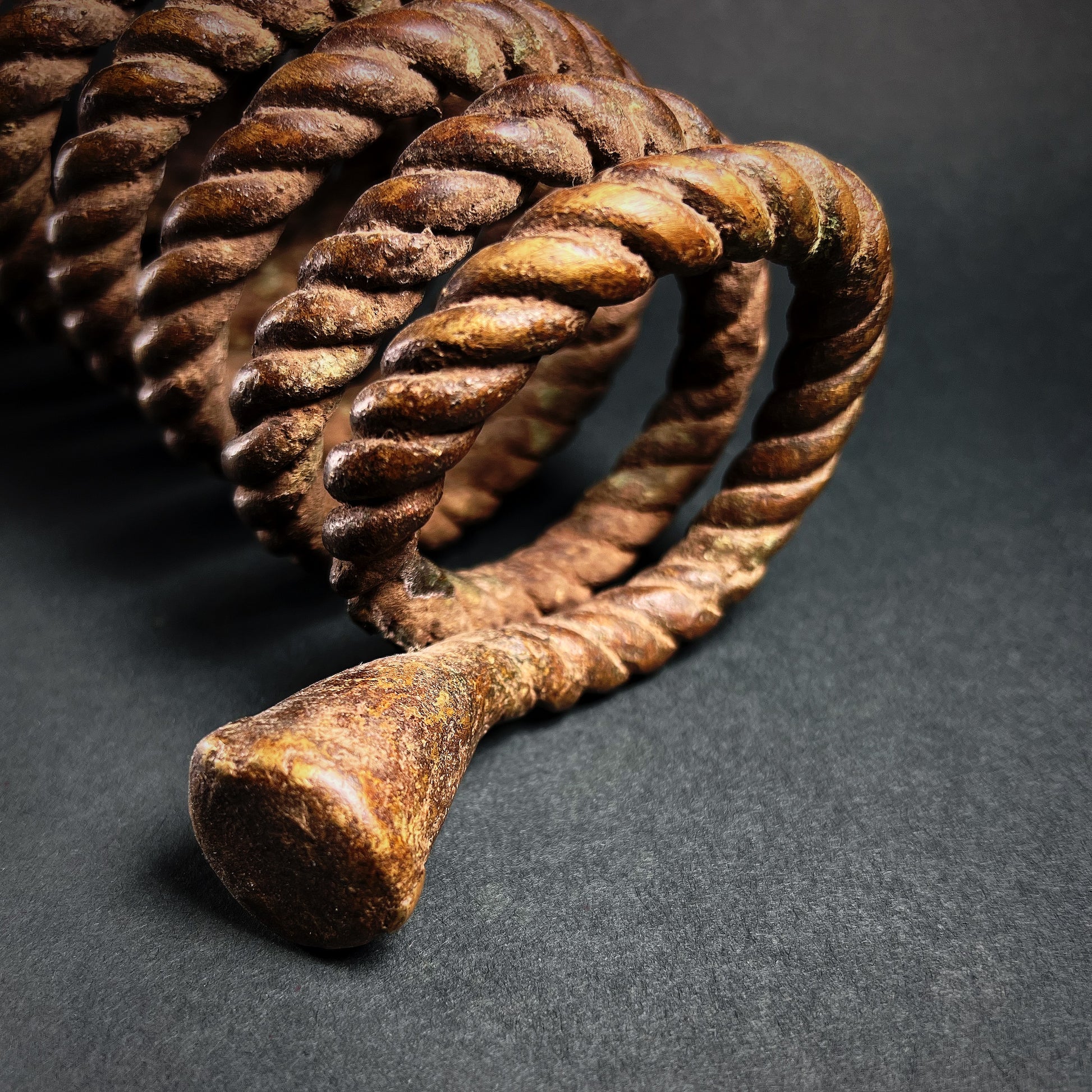Igbo Coiled Copper Alloy Currency Manilla
Igbo Coiled Copper Alloy Currency Manilla
Couldn't load pickup availability
Late 19th or early 20th century, Igbo people, Nigeria, West Africa
Absolutely gorgeous, massive bracelet currency piece formed as a coiled spring and comprised of eight twisted coils terminating in bulging, squared off ends. Used as currency and a symbol of wealth, this piece is especially large and heavy. Given the size and weight, it was most likely a show piece rather one that was worn. The Igbo people, natively called "Ndi Igbo" are the second largest group of people living in southern Nigeria. They are also one of the largest ethnic groups in Africa. Their traditional homeland straddles the Niger River in the south-east and is one of the most densely populated areas of the African continent. The Igbo, who received large quantities of copper in exchange for goods (ivory, pepper, then slaves), developed an impressive copper smelting know-how, enabling them to transport it easily and trade beyond their territory. The technique consisted in hammering copper alloys into rods, which were then wound into coils that could be cut and adjusted to make various types of jewelry, including bracelets, armlets and anklets. These impressive pieces are becoming increasingly sought after.
Manillas are a form of commodity money, usually made of bronze or copper, which were used in West Africa. They were produced in large numbers in a wide range of designs, sizes, and weights. Originating before the colonial period, perhaps as the result of trade with the Portuguese Empire, Manillas continued to serve as money and decorative objects until the late 1940's and are still sometimes used as decoration. In popular culture, they are particularly associated with the Atlantic slave trade. The name manilla is said to derive from the Spanish for a "bracelet" manilla, the Portuguese for "hand-ring" (manilha), or after the Latin manus (hand) or from "monilia", plural of necklace (monile). They are usually horseshoe-shaped, with terminations that face each other and are roughly lozenge-shaped. The earliest use of manillas was in West Africa. As a means of exchange they originated in Calabar. Calabar was the chief city of the ancient southeast Nigerian coastal kingdom of that name. It was here in 1505 that a slave could be bought for 8-10 manillas, and an elephant’s tooth for one copper manilla. Africans of each region had names for each variety of manilla, probably varying locally. They valued them differently, and were very particular about the types they would accept.
Excellent condition. Age-related wear and abrasion. Beautiful encrusted patina of greens, tans and browns, with rust highlights. Light oxidization. Size approx. 21,5cm x 11,5cm x 7,3cm.
Provenance: Private collection from Finland.
For a similar examples see:
Coiled Armlet, The Brooklyn Museum, Accession Number: 2006.66.3 (https://www.brooklynmuseum.org/opencollection/objects/171372)
Currency Piece, The Metropolitan Museum of Art, Accession Number: 1999.485.7 (https://www.metmuseum.org/art/collection/search/318370)
References and further reading:
The Teach Yourself Guide to Numismatics, C.C. Chamberlain, English Universities Press. 1963, p. 92.
The West African Manilla Currency: Research and Securing of Evidence from 1439-2019, Rolf Denk, Tredition GmbH, Hamburg, 2020.
Primitive Money in its ethnological, historical and economic aspects, Paul Einzig, Eyre & Spottiswoode, London, 1949.
Object biographies, Manilla or Penannular Bracelet Currency, Eric Edwards, Balfour Library, Pitt Rivers Museum, January 29th, 2010. (https://web.prm.ox.ac.uk/rpr/index.php/objectbiographies/78-manilla.html)
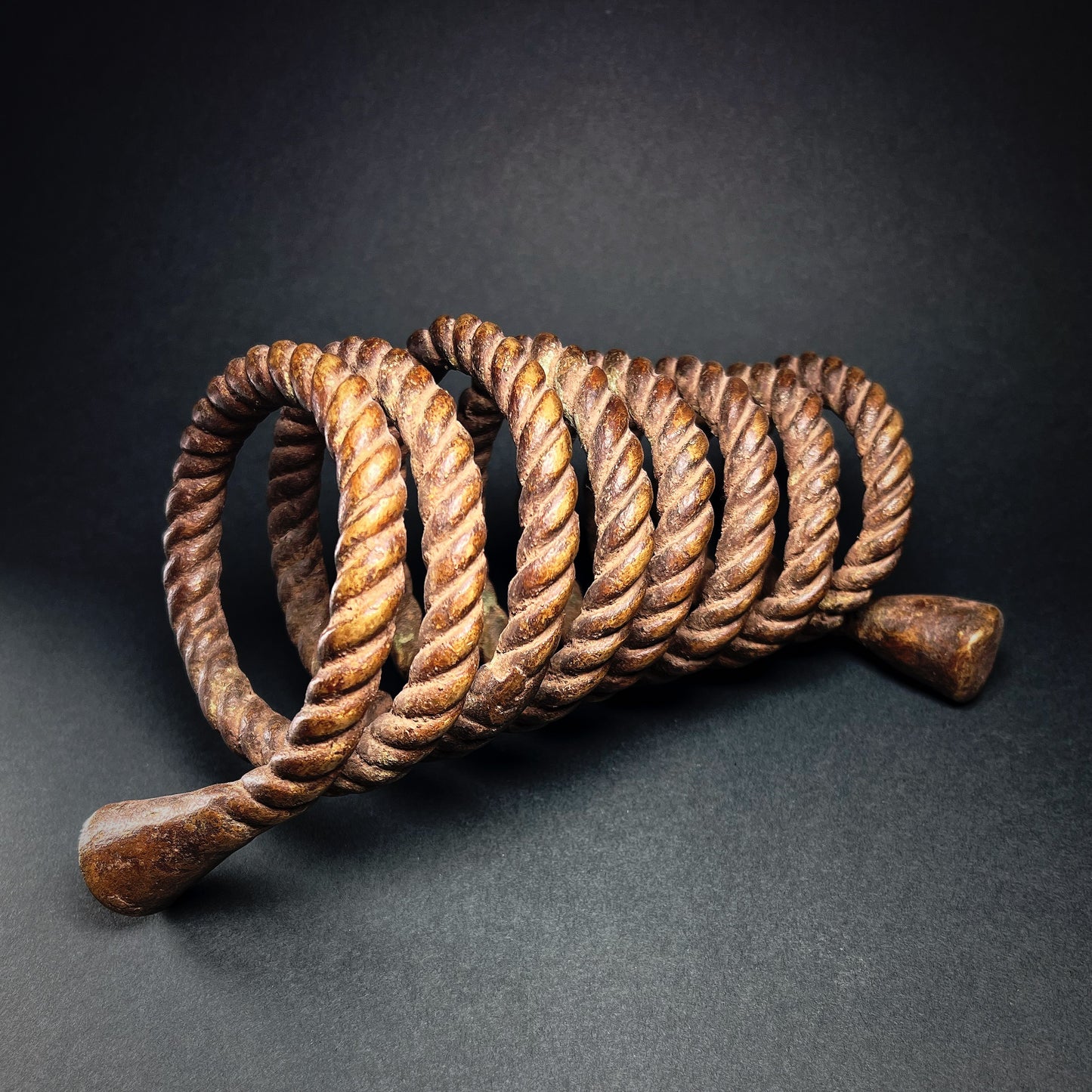
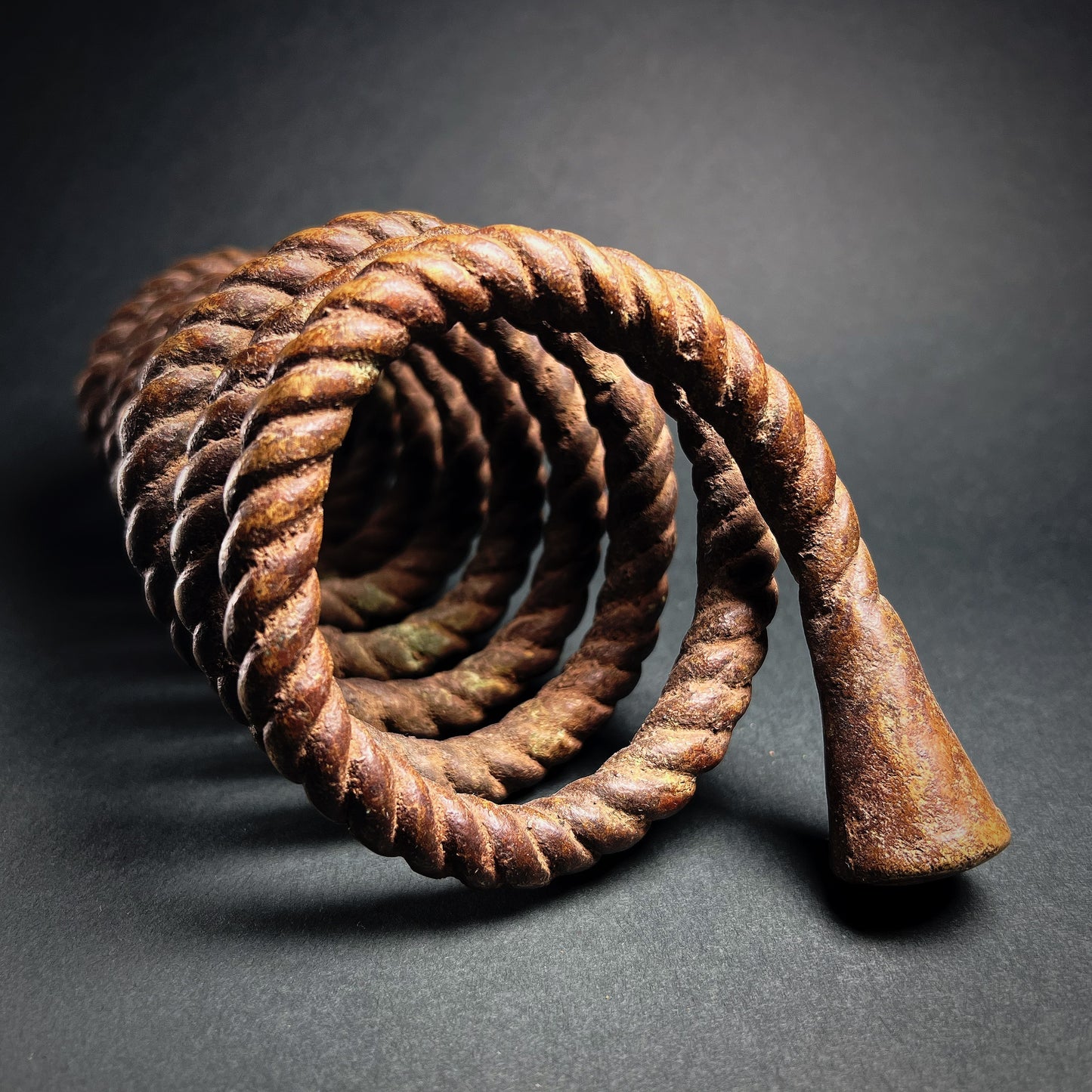
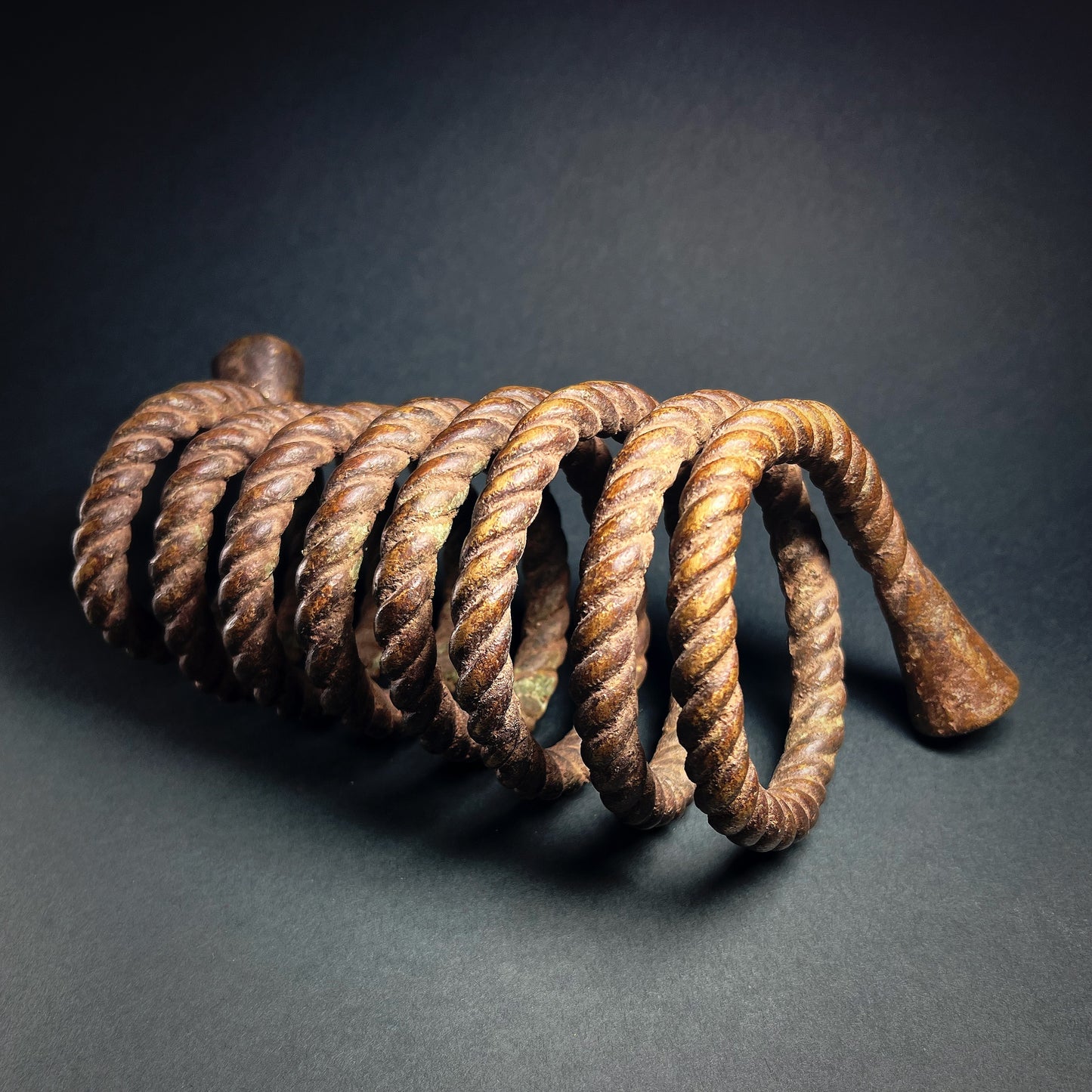
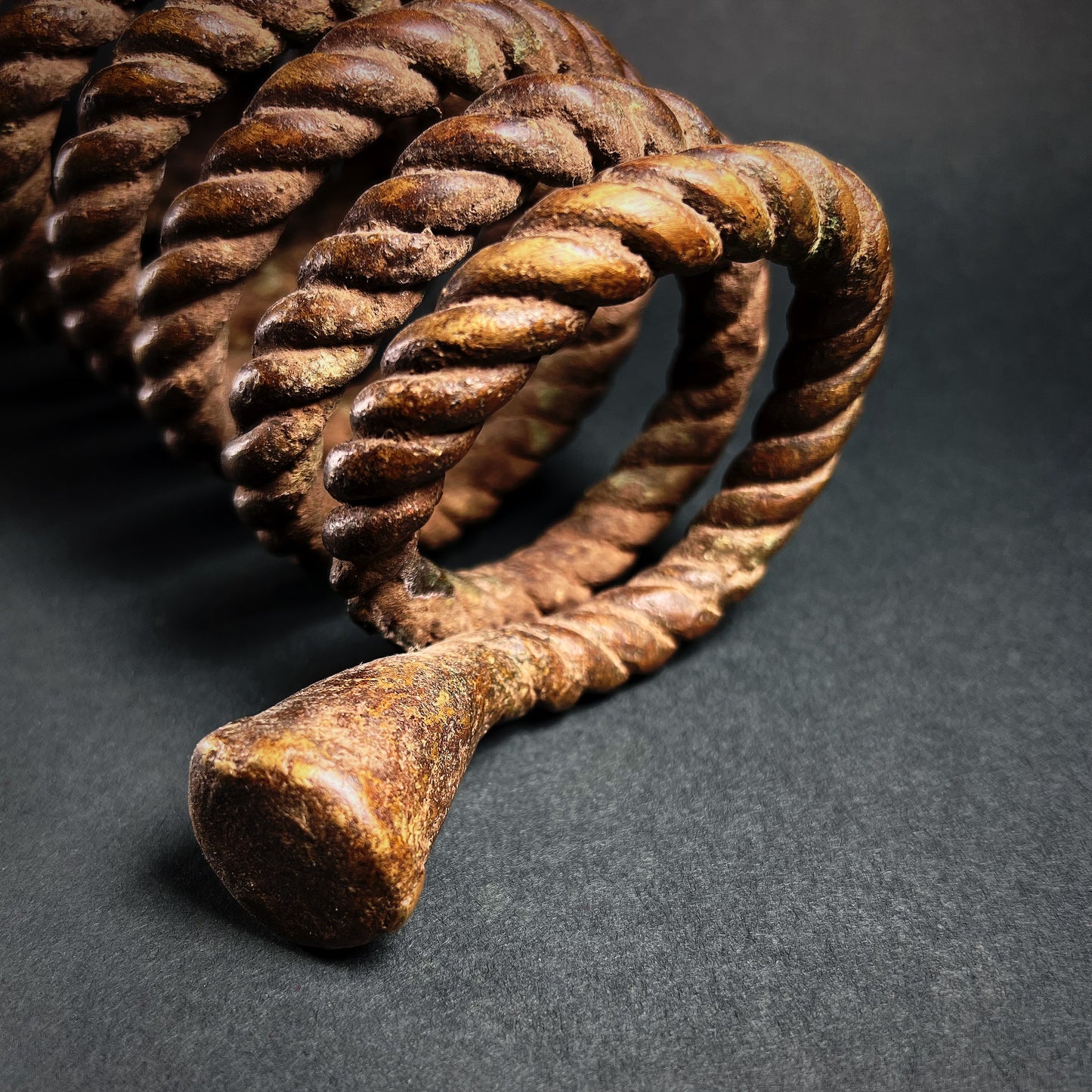
-
Shipping
The shipment will be prepared in the course of 3-5 days and dispatched via Posti Group Oyj or purchased item(s) can be picked up from our shop during the store's opening hours (Tarkk’ampujankatu 4, 00140, Helsinki, Finland). Within the Finland, all items are shipped via Posti Group Oyj unless otherwise requested. We pack the items carefully and mainly in recycled materials because we want to save nature. You will receive the tracking number for your items by e-mail.
-
Returns
Returns and exchange will be accepted within fourteen days (14) of receipt at the purchaser’s cost to include freight and packaging. Items must be returned in the same condition as when they were shipped, and will not be accepted if damaged or altered in any way. Please inform us via email (info@gotanmaailma.fi) or by calling +358408408352 before sending. We do not accept returns more than 14 days after delivery.
